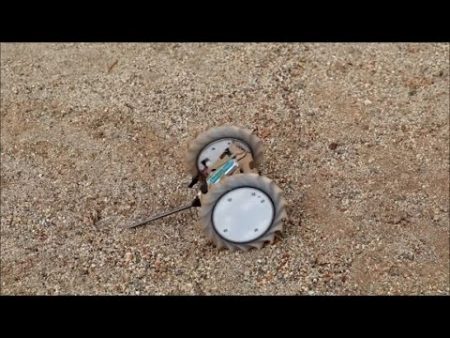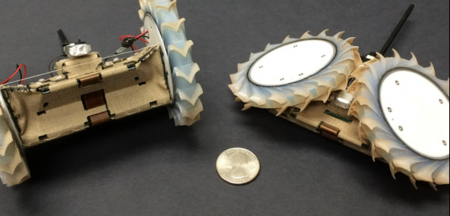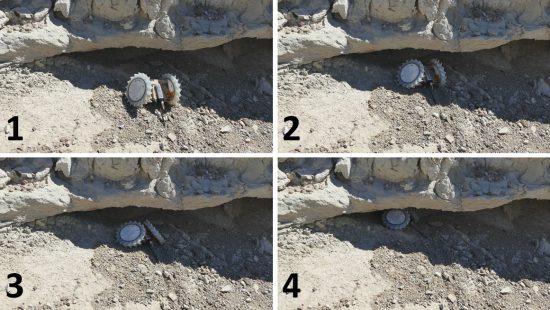March 25, 2017 – Transformers are toys that change from cars into bipedal machines. They make for great movies and toys. But there is another side to the idea behind them. What if we could create a robot that can begin as a tiny object and unfold into a device capable of doing real work in remote places like the surface of Mars or Titan or Europa.
That’s the inspiration behind Pop-Up Flat Folding Explorer Robots, or PUFFERs. At NASA’s Jet Propulsion Laboratory (JPL) these small origami-inspired robots consisting of printed circuit boards, wheels, and multiple sensors, that lie flat during transport and upon arrival at a mission location, unfold and drive off to do their thing.
Inspired by work at the UC Berkeley Biomimetic Millisystem Lab, Jaakko Karras has brought PUFFER to JPL as a concept for future space and Earth-based exploration. The beauty of PUFFER is that these devices could even change shape in transit to manage obstacles and tight spaces. Watch the PUFFER prototype with 3D-printed wheels do its thing on this video posted on YouTube. It impressively can alter shape on the fly and as the four images below show, this provides significant advantages in circumnavigating variable terrain.
PUFFERs aren’t limited to the wheeled-mini-robots seen on the video. These origami-fold devices can resemble a gecko ambulating across a floor and up a wall, or can unfold and spread wings to fly or crawl using multi-jointed constructs that resemble insect legs. The shapes and uses are almost endless and because of their small form factor and light weight, they can be added to a robotic lander payload and add enormous value to a scientific mission by extending its reach. States Karras, “if Curiosity [the Martian rover] had a stack of PUFFERs on board, each of them could go to separate spots, and the rover would just go to the most interesting one.” This would exponentially add to the amount of science done.











